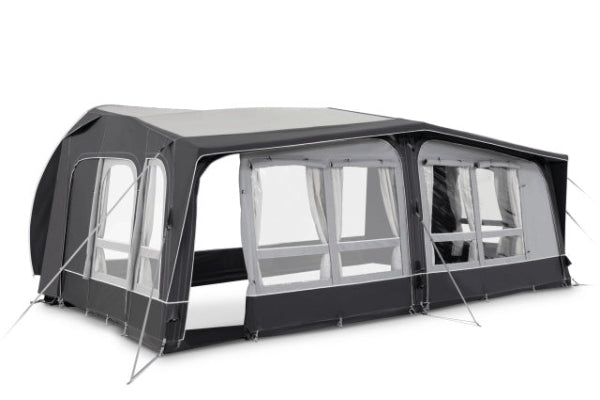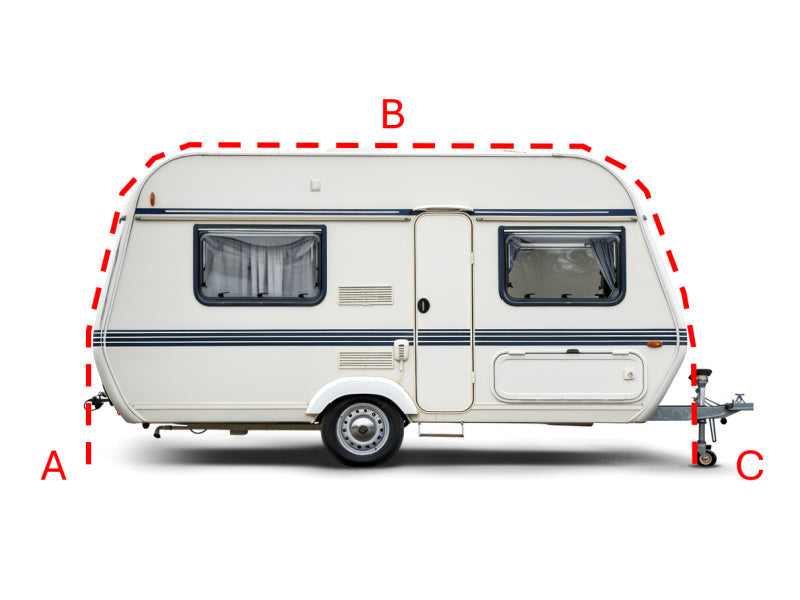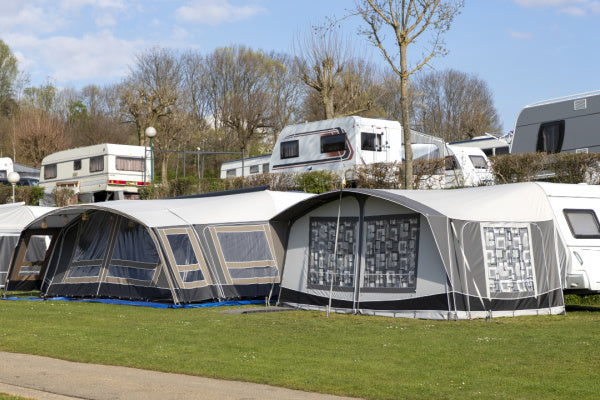Caravan Awning Not Locking? Try This Simple Solution
Is your caravan awning playing hard to get? Don't panic! A stubborn lock usually stems from alignment issues, worn parts, or weather damage. With some basic maintenance and our proven fixes, you'll have your caravan awnings securely fastened in no time. Read on for our simple troubleshooting guide.

Caravan Awning Locking Problems
Nothing ruins a peaceful camping trip quite like a caravan awning that refuses to lock. That gentle breeze suddenly becomes a major concern when the awning starts flapping about. But don't pack up and head home just yet - most awning lock issues have straightforward solutions.
Let's dive into the world of caravan awning mechanisms, common problems, and their fixes. Whether dealing with a stubborn ratchet or a temperamental cam lock, this guide covers everything needed to get that awning secured properly.
Common Locking Mechanisms
The first step in solving any awning problem is understanding exactly what type of lock you're dealing with. Different mechanisms need different approaches, and using the wrong technique might make things worse.
Ratchet Straps
Ratchet straps stand out as the workhorses of awning security. These robust mechanisms use a tooth-and-pawl system to maintain tension, making them particularly effective in challenging weather conditions.
The beauty of ratchet straps lies in their adjustability. They allow for precise tension control, which proves invaluable when dealing with varying weather conditions. Beyond their primary function, these straps also help maintain even fabric tension, extending the life of the awning material.
Quick Release Pins
Quick release pins might seem basic, but they're engineering brilliance in disguise. These spring-loaded marvels slot smoothly into pre-drilled holes, creating a secure connection in seconds.
Their simplicity makes them incredibly reliable. No complex moving parts mean fewer things can go wrong. However, this simplicity doesn't mean they're maintenance-free - proper alignment remains crucial for smooth operation.
Most modern quick-release systems include safety features that prevent accidental disengagement. This extra layer of security proves particularly valuable during unexpected weather changes.

Cam Locks
Cam locks bring sophisticated engineering to awning security. Their rotating mechanism creates a surprisingly strong hold with minimal effort. Many premium awning manufacturers choose cam locks for their combination of security and ease of use.
These locks excel in maintaining consistent tension across the awning. Their design also makes them particularly resistant to vibration, a common issue during travel.
Reasons for Locking Issues
Understanding why an awning lock fails helps prevent future problems. Most issues fall into three main categories, each with its own set of solutions.
Worn-out or Damaged Locking Parts
Time and elements take their toll on even the best-made components. Regular inspection can catch wear before it leads to failure.
Common wear points include:
-
Friction surfaces on ratchet teeth
-
Spring tension in quick-release pins
-
Cam rotation points
-
Metal fatigue in high-stress areas
Salt air exposure accelerates corrosion significantly. Coastal campers need to pay extra attention to maintenance schedules.
Improper Use of Locking Mechanisms
Even the strongest lock can fail when used incorrectly. Understanding proper operation prevents unnecessary damage and extends component life.
Key mistakes to avoid:
-
Forcing misaligned components
-
Skipping pre-lock checks
-
Operating locks with debris present
-
Exceeding designed tension limits
Regular operation actually helps maintain mechanism health. Stored awnings often develop more problems than frequently used ones.

Loose or Missing Parts
Small components play big roles in lock operation. A single missing washer can compromise the entire system.
Watch out for:
-
Loose mounting screws
-
Missing tension springs
-
Worn bushings
-
Damaged mounting points
Vibration during travel often loosens components gradually. Regular checks catch these issues early.
Solutions to Locking Problems
Most locking problems have straightforward solutions. The key lies in identifying the exact issue before attempting repairs.
Inspect and Replace Damaged Parts
Regular inspection prevents many common failures. Catching wear early often means simpler, cheaper repairs.
Essential maintenance steps:
-
Check moving parts monthly
-
Listen for unusual sounds
-
Feel for rough operation
-
Look for visible wear marks
-
Test operation while unloaded
Replacement parts should always match original specifications. Generic alternatives might seem cheaper but often lead to more problems.
Correct Locking Procedures
Proper technique prevents many common issues. Following manufacturer guidelines ensures reliable operation and prevents unnecessary wear.
Key steps for proper operation:
-
Clean mechanism before use
-
Align components carefully
-
Apply steady, even force
-
Verify complete engagement
-
Double-check security
Different weather conditions might require slight technique adjustments. What works perfectly on a sunny day might need modification in heavy rain.
Tighten Loose Connections
Loose connections cause many lock failures. Regular tightening prevents progressive damage and ensures reliable operation.
Focus areas include:
-
Mounting bracket screws
-
Tension adjustment points
-
Lock mechanism fasteners
-
Support arm connections
Use appropriate tools and torque settings. Over-tightening can cause as many problems as loose connections.
Proper awning care extends far beyond just the locking mechanism. Regular cleaning, careful operation, and prompt attention to minor issues prevent major problems from developing.
Remember: a well-maintained awning provides years of reliable service. Taking time for regular checks and maintenance pays off in reduced repairs and increased reliability.
Harsh weather can strike at any time during a camping trip. A properly functioning locking system provides peace of mind and protection when needed most.
Other content you might like:
- Caravan awning not rolling up straight
- Caravan awning not retracting
- Caravan awning on hardstanding
- Caravan awning in high winds
- How to secure a caravan awning in high winds?
- How do you tie down a caravan awning?
- When should I take my caravan awning down?
- How to stop caravan awning flapping?
- Why do some campsites say no awnings?





Leave a comment